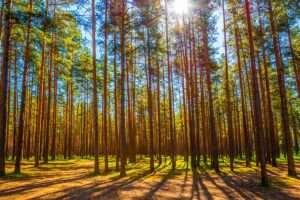Back when Garrison Keillor hosted the radio program “Prairie Home Companion,” he would tell stories about Lake Wobegon, a small fictional town in central Minnesota, “where all the women are strong, all the men are good-looking, and all the children are above average.” This statement, of course, creates an awkward mathematical problem.
Todd Rose, in his book “The End of Average,” talks about the “tyranny of the average.” For any group of people, we can estimate an average height and average weight and average test score, and all of this leads us to think in terms of the “average” person when making policy or educational or other decisions. However, in practice and in fact, few people are average across multiple categories. Any given person will be all over the map on the range of factors considered. And this reality resonates beyond Lake Wobegon.
Average Implications for Timber Markets
So this concept made me consider applications and insights to analyzing timber or wood markets and forecasting timber prices. There is no such thing as an “average timber market.” Rather, when our team profiles markets based on a range of factors related to supply and wood-using capacity and forest operations and economics, each market produces a unique profile. These markets can be grouped to some extent, for analytical and tracking purposes, but the uniqueness highlights how timberland valuations and wood procurement strategies and forest management plans must be customized to the market and to the asset for any primary objective related to optimizing performance, efficiency and returns.
Critics of this thinking might argue that grouping and generalizing, while washing out variances and differences across individuals, facilitates statistical analysis and the testing of hypotheses about how things work. Okay, this makes sense. We make tradeoffs for different applications. For example, timber markets with lots of mills will have better infrastructure, more loggers and, on average, higher timberland values and more productive (higher yielding) forests. That said, these averages tell us little about how to optimize a given forest, supply situation, or set of mills.
Imagine a wood procurement manager with foresters buying wood for a sawmill at different prices and volumes and levels of quality. It is possible that the experienced forester bringing in the most wood with the best quality may spend higher than average prices to procure that wood. And if the procurement manager insisted that this higher cost forester reduce his per unit prices, the quality and reliability of his wood flows would probably fall. The “average” informs us to a point; it rarely accounts for skill, quality, experience or efficiency. Mills, for example, that truly understand their manufacturing yields and financial “returns to log” focus more on maximizing value than on beating the average.
When our team at Forisk studies timber markets, we put the mill, timber property or local market at the center of the analysis. We make multiple assessments of the individual market using scenarios and competing data sources. Then we look at how those individual markets perform as the economy changes or as end markets shift. This provides a path for grouping markets conditionally and also for identifying proxies that can be applied in cases where markets remain opaque. The results generate more nuanced insights than comparing everything to an average when generating questions to direct next steps.
This content may not be used or reproduced in any manner whatsoever, in part or in whole, without written permission of LANDTHINK. Use of this content without permission is a violation of federal copyright law. The articles, posts, comments, opinions and information provided by LANDTHINK are for informational and research purposes only and DOES NOT substitute or coincide with the advice of an attorney, accountant, real estate broker or any other licensed real estate professional. LANDTHINK strongly advises visitors and readers to seek their own professional guidance and advice related to buying, investing in or selling real estate.










Brooks always makes you think beyond the obvious. His analogy of the procurement forester with a higher unit price buying a better log reminds me of the best hardwood sawtimber procurement foresters I’ve known over the years. They would always pay an above average price for an above average log.
It is easy to fall into the trap of thinking about timber markets being made up of homogeneous products but they are not. Ken Prestridge, RF was once asked at church “What’s a five year old pine plantation worth?” His answer was first tell me what a five year old car is worth. Anytime you are making a decision about timber get advice from an experienced local forester. Anytime you are making a buying or selling decision about timberland get advice from an experienced timberland broker.